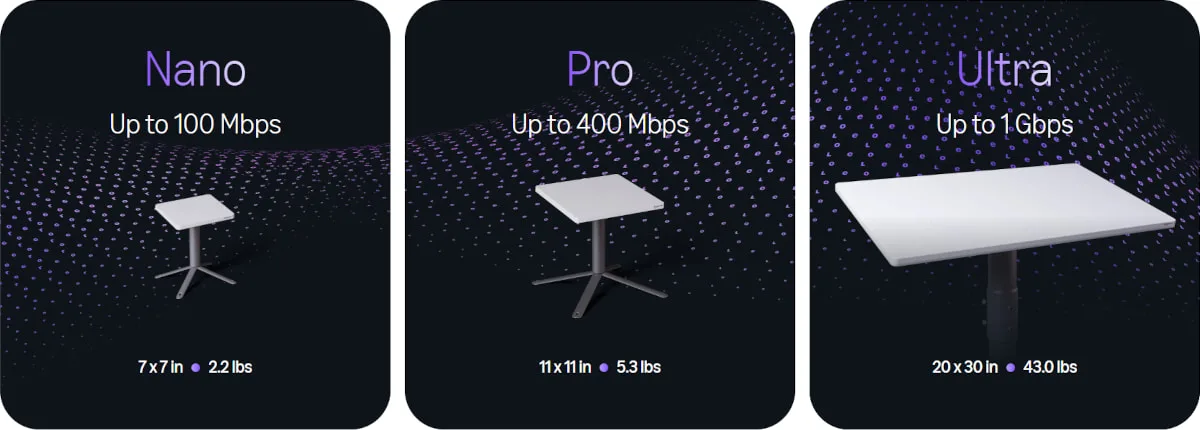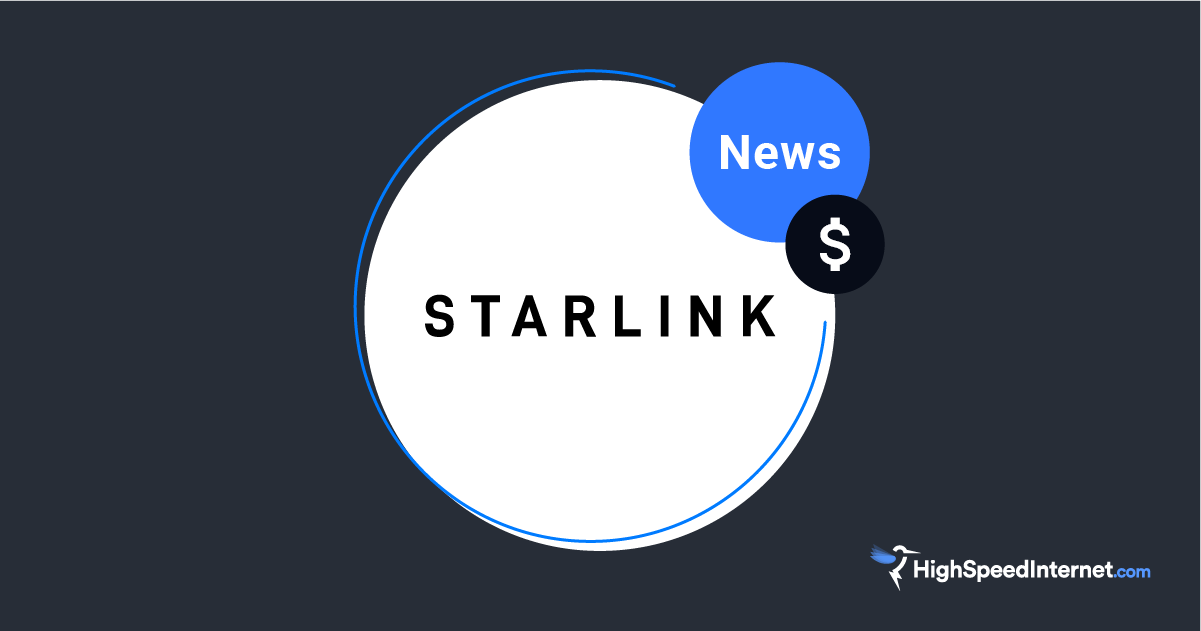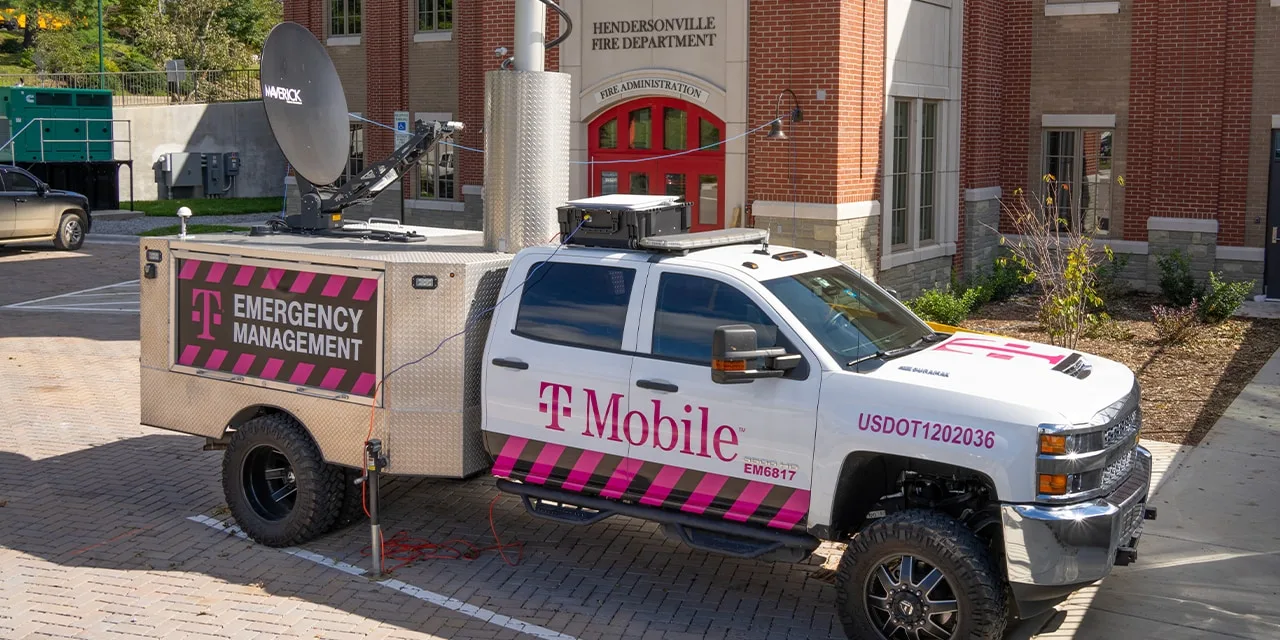Project Kuiper Is Now Amazon Leo
Amazon reveals its long-awaited alternative to Starlink
Nov 13, 2025 | Share
News
On Thursday, Amazon finally announced the permanent brand name for its low-Earth orbit (LEO) satellite internet service—Amazon Leo. We’ve been following the development of Amazon Leo, previously known as Project Kuiper, for years now, so this is a pretty exciting development. It’s especially exciting for people living in rural areas and other locations that lack options for internet providers.
Amazon Leo will be the second LEO satellite provider offering residential internet service, alongside SpaceX’s Starlink. It expects to offer plans to residential customers sometime in 2026.

Amazon Leo announcement. Image courtesy of Amazon.
What is Amazon Leo?
Amazon Leo is a low-Earth orbit (LEO) satellite constellation designed to provide broadband satellite internet to residential, business, and government customers. Like Starlink, the constellation will consist of thousands of small satellites circling the Earth in a low orbit.
Traditional satellite internet providers use a single large satellite in geostationary orbit to provide internet to large portions of the Earth’s surface. LEO constellations, on the other hand, are a swarm of satellites slipping across the sky in high numbers. As soon as the satellite you’re connected to starts moving out of range, another one is already overhead to keep you online.
By reducing the physical distance between the satellites and the Earth’s surface, LEO constellations dramatically reduce the latency of internet connections, which is important for many kinds of real-time applications.
Amazon Leo is a subsidiary of Amazon, originally created in 2019 as Kuiper Systems. The company plans on eventually operating a constellation of 3,236 satellites, though it will take several years to reach that number.
Amazon has previously stated that one of its goals with Amazon Leo is to help bridge the digital divide in the United States, particularly among students. Amazon has committed to investing $10 billion into the project, which it argues will be able to deliver reliable and affordable internet to those in the U.S. who lack reliable home internet access.
Project Kuiper is the third major LEO satellite internet constellation serving the United States, following Starlink and OneWeb, though only Starlink and Amazon Leo offer service to residential customers.
What will Amazon Leo internet service look like?
All satellite internet customers connect to the internet using an antenna or dish mounted on or near their home. The antennas for LEO satellite internet tend to be smaller than those used with satellites in geosynchronous orbit, but unlike the latter, you can’t just point them at a fixed location in the sky and forget them. LEO satellite antennas must be able to track satellites as they move across the sky and frequently switch between them to maintain a constant connection.

Amazon Leo Antennas. Image courtesy of Amazon.
Amazon Leo has already announced three different sizes of antennas, each with different maximum speeds—ranging from 100 to 1,000Mbps. This means that Amazon Leo will be able to easily meet the internet speed requirements for most households, even in remote locations.
Amazon hasn’t announced the prices for these antennas yet, but the company previously predicted that it would be able to produce them for less than $400 each, which would make them cheaper than Starlink’s antennas at the time of launch.
Amazon also hasn’t announced a monthly cost for the service, nor what plan options customers will have available at launch.

Amazon Leo Antennas. Image courtesy of Amazon.
Why should we care about Amazon Leo?
Despite Starlink being the first company to create a LEO satellite constellation for residential internet and gaining a substantial head start over the competition, Project Kuiper has the potential to go toe-to-toe with Starlink and other LEO satellite networks. It also has a big advantage as a subsidiary of Amazon.
Starlink’s biggest challenges over the last few years have not been with its satellite technology, but with the logistics of scaling its operation up to a national level. Although Starlink operates thousands of satellites in orbit, its network has struggled to maintain download speeds as its user base has increased. It also ran into massive issues trying to keep up with orders for new equipment, leaving some customers waiting months to get access to their new internet service.
As part of Amazon, Leo has a significant advantage in logistics. Amazon has been producing and delivering electronics and other products around the world for years. It also knows how to get orders delivered on time. Amazon also has experience dealing with managing internet traffic through another of its subsidiaries, Amazon Web Services (AWS), the leading cloud computing platform in the world.
If Amazon Leo lives up to its promises, we would finally have real competition in the residential LEO satellite internet market. This could mean access to fast, affordable, low-latency internet for millions of rural internet users in a way that Starlink still hasn’t delivered on its own.
Are You Looking for a Faster Internet Option?
See what providers are available in your area by entering your zip code below.
What don’t we know yet?
While there’s plenty to be excited about, there’s still a lot we don’t know from this announcement. As mentioned above, we don’t know much about what to expect as far as plans and pricing, nor other important details like data caps, regional availability, and network stability—issues that plagued Starlink for years after its launch. These questions could still make or break the feasibility of Amazon Leo to many of its potential customers.
Despite this uncertainty, this is not Amazon’s first rodeo. The tech giant is unlikely to suffer the same growing pains that Starlink encountered after launching its service. And with the full might of Amazon behind the project, it wouldn’t be surprising to see Leo fly past Starlink’s current size and capabilities in a short period of time.
Additional resources
If you want to find out more about Amazon Leo and satellite internet, our experts have got you covered.
Author - Peter Christiansen
Peter Christiansen writes about telecom policy, communications infrastructure, satellite internet, and rural connectivity for HighSpeedInternet.com. Peter holds a PhD in communication from the University of Utah and has been working in tech for over 15 years as a computer programmer, game developer, filmmaker, and writer. His writing has been praised by outlets like Wired, Digital Humanities Now, and the New Statesman.
Editor - Jessica Brooksby
Jessica loves bringing her passion for the written word and her love of tech into one space at HighSpeedInternet.com. She works with the team’s writers to revise strong, user-focused content so every reader can find the tech that works for them. Jessica has a bachelor’s degree in English from Utah Valley University and seven years of creative and editorial experience. Outside of work, she spends her time gaming, reading, painting, and buying an excessive amount of Legend of Zelda merchandise.



